Rana Plaza: 12 years of grief, courage, and unkept promises

It's been nearly 12 years, but the memories still refuse to fade.
Back then, the place was sealed off with tin walls and barbed wire. Inside that enclosure lay what could only be called a graveyard—where human remains were mixed with dust, brick chips, and scraps of concrete. If you dug even a little, you might've found a tooth, a bone, or even a skull. Just the thought still sends shivers down the spine.
The ground was uneven, with small mounds and dips. Pieces of torn fabric in red, blue, and violet were scattered everywhere, silent witnesses to the shattered bodies they once clothed. Threads lay tangled with buttons, blood-stained clothes, and foreign labels bearing unfamiliar names. Seen from above, it looked like a land struck by a brutal storm. But this wasn't caused by nature. This was the wreckage left behind by April 24, 2013.
That day, at Rana Plaza, more than a thousand lives were crushed beneath cement, machines, and metal. It wasn't a natural calamity. It wasn't an accident or divine punishment. No outside enemy attacked. The real storm that hit Rana Plaza was made with human hands—by neglect, by greed, and by the failure of those who should have protected lives. It was a massacre, silent, cold, and structural.
April 24 is a date that cannot be swept under the rug. No matter how many years pass, its impact will linger. On that morning in Savar, just 21 kilometres from central Dhaka, more than 1,100 workers lost their lives when the nine-storey Rana Plaza building collapsed. At least 162 are still missing, according to research by Bangladesh Garment Sramik Samhati.
The workers arrived early, in groups, as they had every day. They entered the building that housed five factories—New Wave Bottoms Ltd, Phantom Apparels, Phantom Tac, Ether Tex, and New Wave Style—spread across six floors (third to eighth). The lower floors held shops and banks; the top floor was empty. Bizarrely, huge generators were installed on the third and eighth floors, not on the ground, raising the risks. From the outside, the blue glass facade looked polished. Inside, it was a death trap.
The land that the building had been constructed on had been illegally grabbed, including the property owned by locals like Rabindranath Sarkar. Sohel Rana, owner of Rana Plaza, and his family had a reputation for grabbing land. People were afraid to speak out. "If you say anything about him, there will be trouble," they would whisper. "Even the local MP supports him."
Still, rumours about the building's cracks had started spreading. Workers were anxious that morning. Some even hesitated to enter. But threats and pressure from the factory authorities pushed them inside. Deadlines and exports mattered more to the owners than lives.
And then it happened. With a deafening roar, the building came crashing down. Within moments, everything was reduced to rubble. Survivors described it as being buried alive inside a grave. Some cried out for help. Others whispered prayers. Many fainted from shock or exhaustion.
In the dim light of their mobile phones, trapped workers saw horrifying sights. Bodies crushed under machines and concrete. Blood dripping down the walls. One man's legs hung from beneath a staircase. A woman was impaled by an iron rod. There were dismembered limbs, lifeless eyes, broken dreams. Some survivors clung to one another, huddled in the darkness, their only wish to live. Religion, gender, age—none of it mattered. People reached for comfort wherever they could find it.
Jasmine, a survivor pulled from the rubble two days later, shared a story that still resonates with me. "I was trapped and had lost hope," she said. "An unknown man held me close to his chest. As a woman, leaning on a stranger like that would normally be unthinkable. But in that moment, nothing mattered more than the hope of living—of seeing my daughter again. I'll pray for that brother all my life. Because of him, I'm alive."
The horrors didn't stop there. Blood, filth, intestines, and death surrounded them. Some drank their own sweat, others resorted to drinking urine to survive. One woman named Rojina cut down her own hand to release herself out of desperation. People recited their final prayers. Some lost their minds. They pulled hair, scratched, attacked each other—anything to stay sane or alive. Trapped survivors held on for as long as 17 agonising days.
The official record says the Rana Plaza collapse caused 1,136 deaths. But when you include those who are missing and DNA evidence, the number exceeds 1,175. Still, for the authorities, factory owners, and international buyers, these lost lives seem to be just a number—a number that's too easy to forget.
But these workers were not just statistics. They were citizens of this country. They were daughters, sons, mothers, and fathers. They were the lifeblood of a national economy, part of a 40-lakh-strong workforce. How can we, as a country, turn away from them?
The world woke up that day. The name Rana Plaza became synonymous with both tragedy and awakening. Since then, the ready-made garment (RMG) sector has seen massive changes: green factories, new markets, ambitions of becoming a hundred-billion-dollar industry. But the question remains: how much of this progress has reached the workers?
Twelve years have passed. And yet, there has been no real justice. Sohel Rana and others responsible have not faced meaningful consequences. The compensation laws haven't changed. Survivors still struggle to live on a minimum wage of Tk 12,500. The site remains unpreserved. There is no national memorial at the site of Rana Plaza, nor other sites of industrial disasters such as Tazreen Fashion and Hashem Foods.
But their fight should not be forgotten. In the new Bangladesh built by its people, there must be justice—not only for Rana Plaza but also for Tazreen and Hashem Foods fires. We must protect the stories, the sites, the sacrifices.
Let April 24 be a day not just of mourning, but of renewal. Let us remember the dead—and the fight for the living. That must be our promise.
Taslima Akhter is president of the Bangladesh Garment Sramik Samhati and a photographer. She can be reached at [email protected].
Views expressed in this article are the author's own.
Follow The Daily Star Opinion on Facebook for the latest opinions, commentaries and analyses by experts and professionals. To contribute your article or letter to The Daily Star Opinion, see our guidelines for submission.
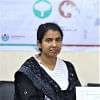
 For all latest news, follow The Daily Star's Google News channel.
For all latest news, follow The Daily Star's Google News channel. 
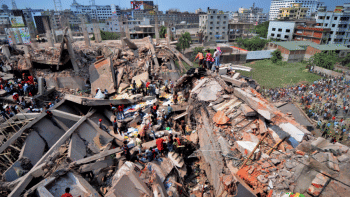




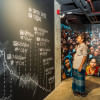
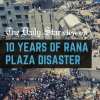
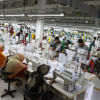


Comments